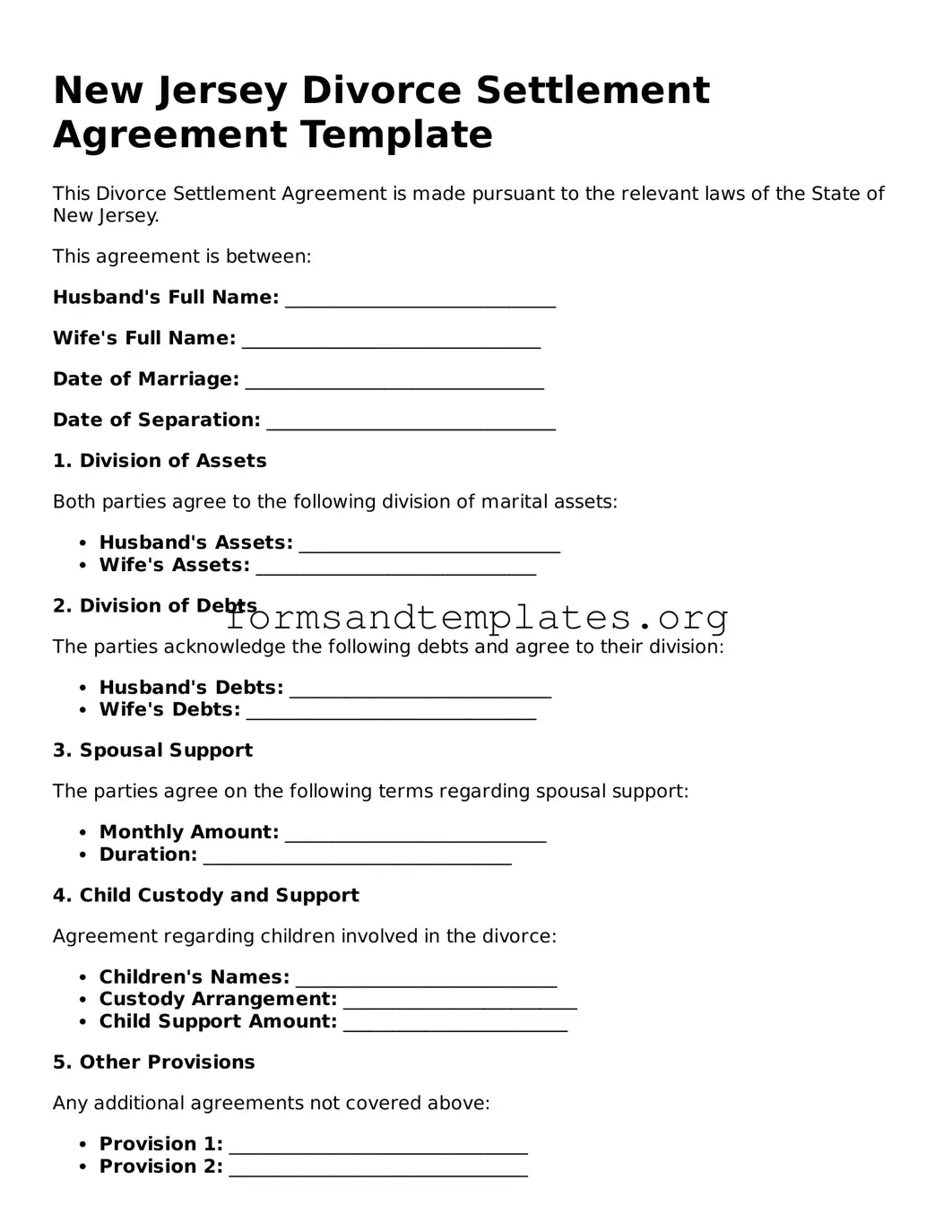New Jersey Divorce Settlement Agreement Template
This Divorce Settlement Agreement is made pursuant to the relevant laws of the State of New Jersey.
This agreement is between:
Husband's Full Name: _____________________________
Wife's Full Name: ________________________________
Date of Marriage: ________________________________
Date of Separation: _______________________________
1. Division of Assets
Both parties agree to the following division of marital assets:
- Husband's Assets: ____________________________
- Wife's Assets: ______________________________
2. Division of Debts
The parties acknowledge the following debts and agree to their division:
- Husband's Debts: ____________________________
- Wife's Debts: _______________________________
3. Spousal Support
The parties agree on the following terms regarding spousal support:
- Monthly Amount: ____________________________
- Duration: _________________________________
4. Child Custody and Support
Agreement regarding children involved in the divorce:
- Children's Names: ____________________________
- Custody Arrangement: _________________________
- Child Support Amount: ________________________
5. Other Provisions
Any additional agreements not covered above:
- Provision 1: ________________________________
- Provision 2: ________________________________
This Divorce Settlement Agreement is effective as of the date signed below:
Husband's Signature: ___________________________ Date: _______________
Wife's Signature: _____________________________ Date: _______________
This document is intended to be a comprehensive representation of the agreement reached by both parties and is governed by New Jersey state law.
